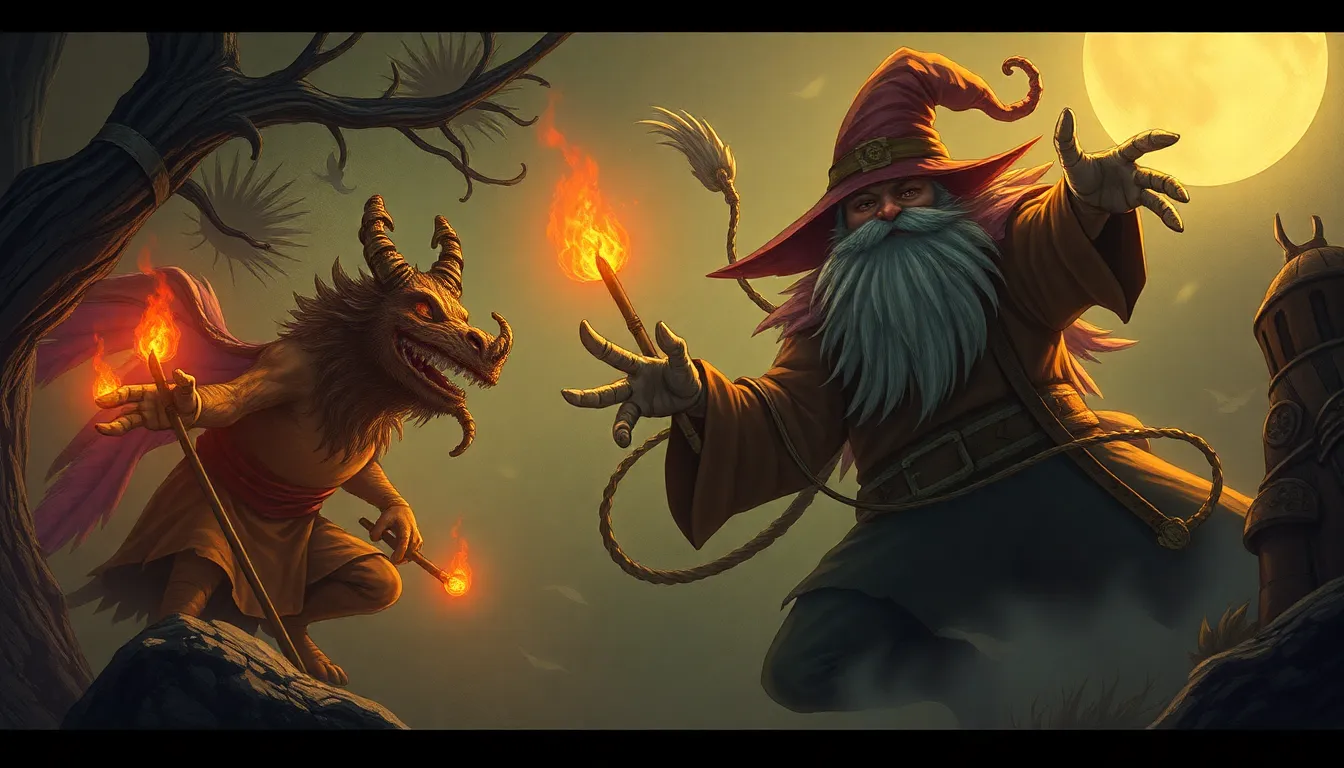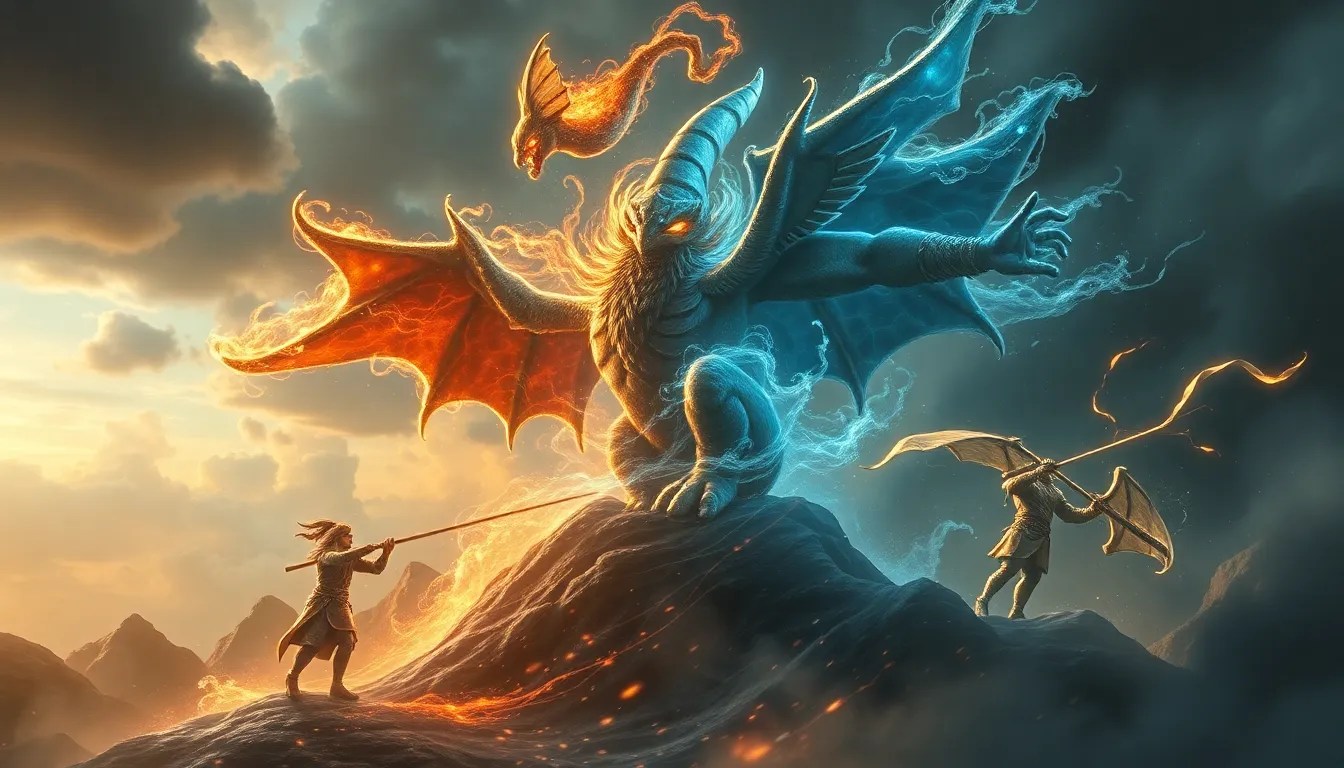The Most Memorable Trickster Characters in Folklore
Introduction to Trickster Archetypes
Tricksters have long been a captivating element of folklore, embodying a unique archetype that transcends cultures and epochs. Defined as individuals who use cunning and wit to outsmart others, tricksters often find themselves in situations where their cleverness leads to both chaos and resolution.
Across various cultures, tricksters serve essential roles, challenging societal norms and exposing the absurdities of life. They are often seen as boundary-crossers who navigate between different realms—be it the sacred and the profane, the human and the divine, or the moral and the immoral. Their stories often provide valuable lessons, offering insights into human nature and the complexities of existence.
The Origins of Trickster Figures
The origins of trickster figures can be traced back to ancient civilizations, where they emerged as essential components of mythology and storytelling. Historical contexts reveal that these characters often arose during times of social upheaval, reflecting the chaos of their surroundings. Common traits among tricksters include:
- Intelligence and resourcefulness
- Deception and mischief
- A playful attitude towards authority
- The ability to shapeshift or transform
Tricksters embody a duality that represents both chaos and order. They often create disorder through their antics, yet this chaos frequently leads to new understandings or resolutions, making them pivotal to the narrative structure.
Anansi the Spider: The Clever West African Trickster
Anansi, a prominent figure in Akan folklore, is one of the most famous tricksters in West African tradition. Often depicted as a spider or a man with spider-like qualities, Anansi is known for his cleverness and cunning. His stories, which have been passed down through generations, often revolve around his attempts to outsmart larger and more powerful beings.
Key stories about Anansi include:
- Anansi and the Sky God: In this tale, Anansi tricks Nyame, the sky god, into giving him the stories of the world, showing that wisdom can be gained through cleverness.
- Anansi and the Pot of Wisdom: Anansi attempts to hoard all the world’s wisdom but learns that sharing knowledge is far more valuable.
Anansi’s influence extends beyond Africa, particularly in the African diaspora, where he has become a symbol of resilience and intelligence in overcoming adversity.
Coyote: The Shape-Shifting Trickster of Native American Lore
Coyote is a central figure in many Native American cultures, revered and reviled for his cunning nature. His stories often reflect the values and beliefs of the tribes that tell them, demonstrating how trickster figures can be both creators and destroyers. Coyote is known for:
- His shape-shifting abilities, which allow him to navigate between different realms.
- His role in creation myths, where he often plays a part in shaping the world.
- His moral lessons, which frequently highlight the consequences of greed and hubris.
Notable tales include Coyote stealing fire from the gods and various stories that address the balance of nature and the importance of humility.
Loki: The Norse God of Mischief
Loki, a complex character in Norse mythology, embodies the trickster archetype with both charm and malice. As a shape-shifter and a master of deception, Loki’s actions have significant consequences for the gods of Asgard and the world itself. His key myths include:
- The Theft of Idun’s Apples: Loki’s trickery results in the theft of the apples of immortality, highlighting themes of betrayal and the fragility of life.
- The Death of Baldr: Loki’s manipulation leads to the tragic death of the beloved god Baldr, showcasing the darker side of his character.
Loki’s complexity as a character blurs the lines between hero and villain, suggesting that tricksters can embody both chaos and necessary change within a narrative.
Br’er Rabbit: The Southern American Trickster
Br’er Rabbit is a quintessential figure in African American folklore, representing resilience and cleverness in the face of adversity. Originating from African roots, his stories were popularized in the Southern United States and often feature his encounters with larger, more powerful animals. Notable tales include:
- The Tar-Baby: In this story, Br’er Rabbit tricks Br’er Fox into getting stuck to a tar figure, illustrating the importance of wit over brute strength.
- Br’er Rabbit and the Briar Patch: This tale emphasizes how Br’er Rabbit uses his cunning to escape danger by playing on the fears of his enemies.
Br’er Rabbit’s enduring legacy highlights the importance of cleverness and resourcefulness, especially in marginalized communities.
The Fox in Japanese Folklore: Kitsune as a Trickster
Kitsune, or foxes, are significant figures in Japanese folklore, often embodying the duality of protector and deceiver. Revered in Shinto as messengers of the rice deity Inari, Kitsune are known for their intelligence and magical abilities. Significant tales include:
- The Grateful Foxes: In this story, a fox saves a man, and in return, the man receives prosperity and protection from the fox’s spirit.
- The White Fox of Shinoda: This tale illustrates how Kitsune can both aid humans and lead them astray, reflecting their complex nature.
Kitsune’s representation in modern media has evolved, appearing in anime, literature, and films, showcasing their lasting impact on culture.
The Role of Gender in Trickster Narratives
Gender plays a significant role in the characterization of tricksters. While many well-known tricksters are male, female tricksters also emerge in various cultures, offering unique perspectives and qualities. Examples of female tricksters include:
- Spider Woman: In Native American mythology, she is a creator figure and a trickster who teaches important lessons about life and community.
- Maxine Hong Kingston’s “No Name Woman”: In this narrative, female tricksters challenge societal expectations and norms.
The contrast between male and female trickster characters often highlights societal gender roles and can subvert traditional narratives, empowering women through cunning and resourcefulness.
Tricksters in Modern Literature and Media
The evolution of trickster figures continues in contemporary storytelling, where they appear in various forms in literature, movies, and television. Modern tricksters often reflect current societal issues, making them relevant to contemporary audiences. Examples include:
- Tom Sawyer: Mark Twain’s character embodies the playful yet shrewd nature of the trickster, navigating the complexities of youth and society.
- Deadpool: In comic books and films, he serves as a modern trickster, breaking the fourth wall and challenging traditional narrative structures.
The themes of trickery, deception, and wit resonate with audiences today, reflecting the ongoing relevance of these archetypes in understanding human behavior and societal norms.
Conclusion: The Enduring Legacy of Trickster Characters
The legacy of trickster characters in folklore is profound, serving as a mirror to the complexities of human nature and societal structures. Their stories transcend cultural boundaries, offering universal truths about resilience, intelligence, and the human condition.
Tricksters continue to captivate audiences, demonstrating that the interplay between chaos and order is an essential part of storytelling. As we reflect on their enduring appeal, it becomes clear that tricksters will always hold a significant place in cultural narratives, reminding us of the power of wit and the importance of questioning authority.



